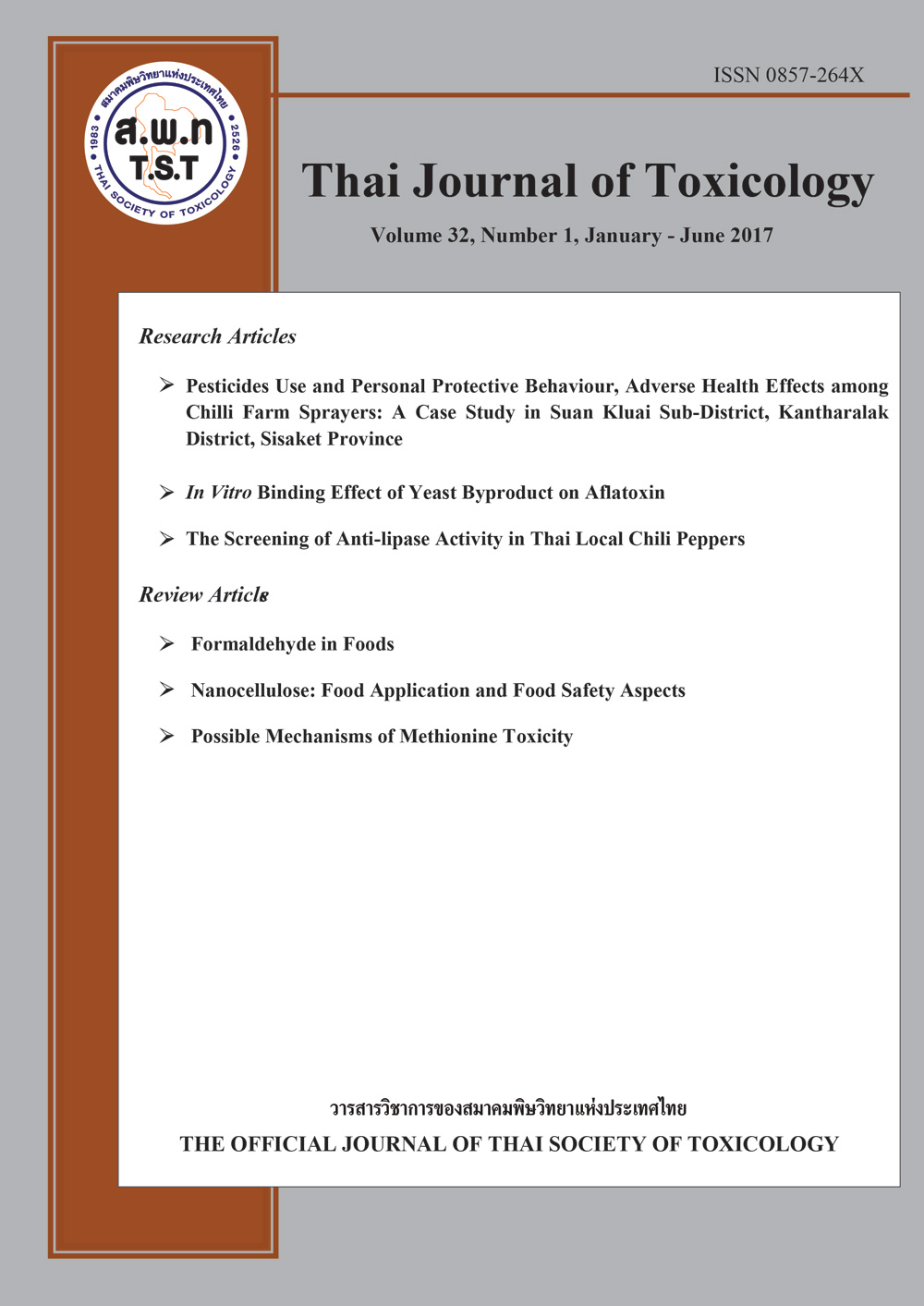Possible mechanisms of methionine toxicity
Main Article Content
Abstract
The purpose of this study is to review possible mechanisms of methionine toxicity. Although methionine is an essential sulfur-containing amino acid, it is also considered as a toxic substance when there are abruptions of methionine metabolism which consequently lead to hypermethioninemia. One of the significant clinical pathology related to hypermethioninemia is hepatotoxicity that could be found in patients with alcoholic liver disease, cholestasis, and in infants receiving total parenteral nutrition. Mechanisms of methionine toxicity described in this review consist of the decrease in transmethylation and the increase in transamination and sulfoxidation. However, these assumptions are mostly obtaineded from the results of cellular and animal studies. Further investigation in the clinical studies is needed.


